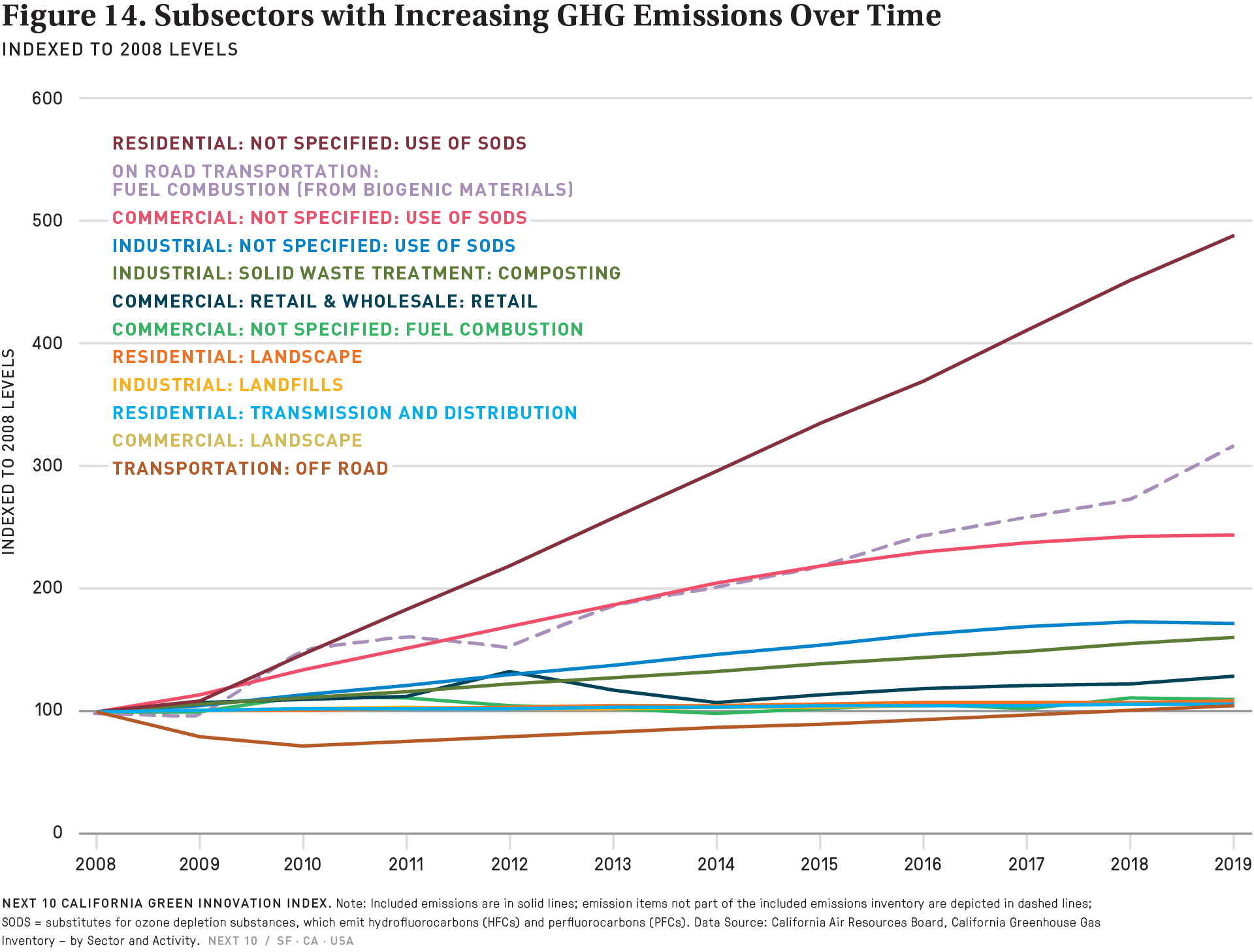Highlights
- The state has made tremendous progress reducing its GHG emissions, but there are a few sub-sectors and activities where GHG emissions have generally risen. From 2008 to 2019, statewide included GHG emissions decreased 13.6 percent; GHG emissions increased 77.1 percent in these sub-sectors during the same period. In addition to the use of substitutes for ODS and landfills, GHG emissions from fuel combustion activities for non-specified commercial sub-sectors have also risen significantly across time (up 9.7% compared to 2008). GHG emissions associated with landscape (the use of nitrogen fertilizer on turf) from the Commercial and Residential sectors have risen gradually in line with population growth, increasing by 8 percent from 2008 to 2019.
- GHG emissions from fuel combustion of biogenic materials (including biofuels and other biogenic energy sources) for on-road transportation have been rapidly increasing, up 216 percent in 2019 compared to 2008. This is not necessarily bad as emissions from biogenic materials do not permanently and irreversibly increase atmospheric concentration of greenhouse gases. Specifically, these emissions, which are not part of the included emissions inventory, result from combustion of biodiesel, ethanol, and renewable diesel. While these fuel sources do result in some emission of greenhouse gas, it would be an improvement if these fuels could displace the combustion of gasoline. Also, these numbers only reflect local emissions, so they understate the effect of state policy. For example, divestments in coal plants elsewhere are not reflected here.
More About the
Carbon Economy
Related Content
